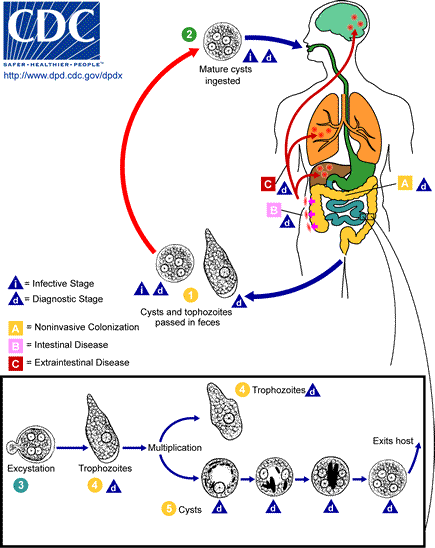File:Entamoeba histolytica Amebiasis LifeCycle.gif
From WikiLectures
Entamoeba_histolytica_Amebiasis_LifeCycle.gif (435 × 548 pixels, file size: 28 KB, MIME type: image/gif, 0.2 s)
File history
Click on a date/time to view the file as it appeared at that time.
| Date/Time | Thumbnail | Dimensions | User | Comment | |
|---|---|---|---|---|---|
| current | 16:26, 29 April 2006 |  | 435 × 548 (28 KB) | wikimediacommons>Patho | {{Information| |Description= Amebiasis [Entamoeba histolytica] Life Cycle of Entamoeba histolytica Cysts and trophozoites are passed in feces . Cysts are typically found in formed stool, whereas trophozoites are typically found in diarrheal stool. |
File usage
The following page uses this file:

